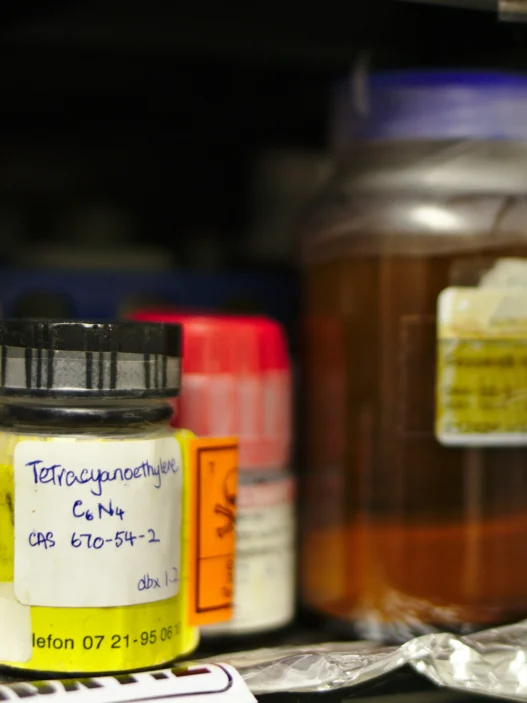D-glucopyranose 1-phosphate, a compound derived from glucose metabolism, plays a crucial role in various biological processes in everyday life. It serves as an essential substrate for the synthesis of glycogen, a form of energy storage in the body. Moreover, D-glucopyranose 1-phosphate is involved in the regulation of blood sugar levels, thereby impacting overall metabolic health. Its significance extends beyond the realm of biochemistry, as understanding its function can provide insights into dietary choices and the management of conditions such as diabetes.
Table of Contents:
- 💡 Commercial Applications
- ⚗️ Chemical & Physical Properties
- 🏭 Production & Procurement
- ⚠️ Safety Considerations
- 🔬 Potential Research Directions
- 🧪 Related Compounds
💡 Commercial Applications
D-glucopyranose 1-phosphate, also known as glucose-1-phosphate, has various commercial and industrial applications. It is commonly used as a source of glucose in food and beverage industries for sweetening and flavor enhancement. It also serves as a precursor for the synthesis of other important compounds such as cellulose and starch in the textile and paper industries.
In addition to its commercial and industrial uses, D-glucopyranose 1-phosphate has significant applications in the field of drug and medication development. This compound is utilized in the production of certain drugs to treat glycogen storage diseases, where an individual’s body cannot break down glycogen effectively. Its ability to be converted into glucose in the body makes it a valuable component in therapeutic interventions for these metabolic disorders.
Furthermore, D-glucopyranose 1-phosphate plays a crucial role in pharmaceutical formulations as an excipient, aiding in the stabilization of drug formulations and improving their bioavailability. Its compatibility with various pharmaceutical ingredients makes it a versatile additive in drug manufacturing processes. Overall, the diverse range of applications of D-glucopyranose 1-phosphate underscores its importance in both commercial and medicinal contexts.
⚗️ Chemical & Physical Properties
D-glucopyranose 1-phosphate appears as a white crystalline powder with no distinct odor. It is soluble in water, giving a clear solution.
The molar mass of D-glucopyranose 1-phosphate is approximately 260.141 g/mol, with a density of about 1.67 g/cm³. Compared to common food items, D-glucopyranose 1-phosphate has a higher molar mass and density than glucose (180.156 g/mol, 1.54 g/cm³).
D-glucopyranose 1-phosphate has a melting point of around 119-122°C and a boiling point of approximately 362-363°C. These values are higher than those of common food items like sugar and salt, which have lower melting and boiling points.
D-glucopyranose 1-phosphate is highly soluble in water and has a low viscosity. It dissolves easily and forms a clear solution. In comparison, common food items like sugar and salt also dissolve in water but may exhibit different levels of solubility and viscosity.
🏭 Production & Procurement
D-glucopyranose 1-phosphate is produced through the enzymatic phosphorylation of D-glucose. This process involves the conversion of D-glucose into D-glucopyranose 1-phosphate via the addition of a phosphate group. This reaction is catalyzed by the enzyme hexokinase.
In order to procure D-glucopyranose 1-phosphate, one can either synthesize it in a laboratory setting or extract it from biological sources such as plant material. The compound can also be commercially purchased from chemical suppliers. D-glucopyranose 1-phosphate can be transported in its solid form or dissolved in a suitable solvent for ease of handling and storage.
Transportation of D-glucopyranose 1-phosphate should be done under controlled conditions to prevent degradation or contamination. The compound should be stored in a dry and cool environment to maintain its stability. Proper labeling and documentation should be provided during transportation to ensure safe handling and compliance with regulations.
⚠️ Safety Considerations
Safety considerations for D-glucopyranose 1-phosphate involve handling the substance with caution due to its potential health hazards. It is important to avoid inhalation, ingestion, and skin or eye contact with the compound to prevent adverse effects. Additionally, proper personal protective equipment, such as gloves and goggles, should be worn when working with D-glucopyranose 1-phosphate to minimize the risk of exposure.
Hazard statements for D-glucopyranose 1-phosphate typically include warnings about its potential for causing skin and eye irritation upon contact. The substance may also present a risk of respiratory irritation if inhaled. It is important to keep D-glucopyranose 1-phosphate stored in a secure location away from incompatible materials to prevent accidents or spills that could result in harmful exposure.
Precautionary statements for D-glucopyranose 1-phosphate often recommend handling the substance in a well-ventilated area to minimize the risk of inhalation. It is crucial to avoid contact with skin, eyes, and clothing when working with the compound to prevent irritation or sensitization. Proper disposal methods should be followed to ensure the safe handling and disposal of any waste containing D-glucopyranose 1-phosphate.
🔬 Potential Research Directions
One potential research direction for D-glucopyranose 1-phosphate is its role in the regulation of carbohydrate metabolism. Studies may focus on the enzymatic pathways involved in the synthesis and degradation of this molecule, as well as its impact on glucose homeostasis.
Furthermore, researchers could investigate the potential therapeutic applications of D-glucopyranose 1-phosphate in the treatment of metabolic disorders such as diabetes. By understanding its mechanism of action and physiological functions, novel approaches for managing glucose levels could be developed.
Additionally, studies could explore the relationship between D-glucopyranose 1-phosphate and cellular signaling pathways. Investigating how this molecule interacts with key signaling molecules and affects gene expression could provide insight into its broader biological significance.
🧪 Related Compounds
One similar compound to D-glucopyranose 1-phosphate based upon molecular structure is D-mannopyranose 1-phosphate. This compound has a similar pyranose ring structure as D-glucopyranose 1-phosphate but with a different configuration of hydroxyl groups. D-mannopyranose 1-phosphate plays a role in various cellular processes, similar to D-glucopyranose 1-phosphate.
Another similar compound is D-galactopyranose 1-phosphate. Like D-glucopyranose 1-phosphate, D-galactopyranose 1-phosphate is a phosphorylated sugar molecule with a pyranose ring structure. These compounds are isomers, differing only in the configuration of the hydroxyl groups attached to the ring. D-galactopyranose 1-phosphate is involved in metabolic pathways and cellular signaling, similar to D-glucopyranose 1-phosphate.



